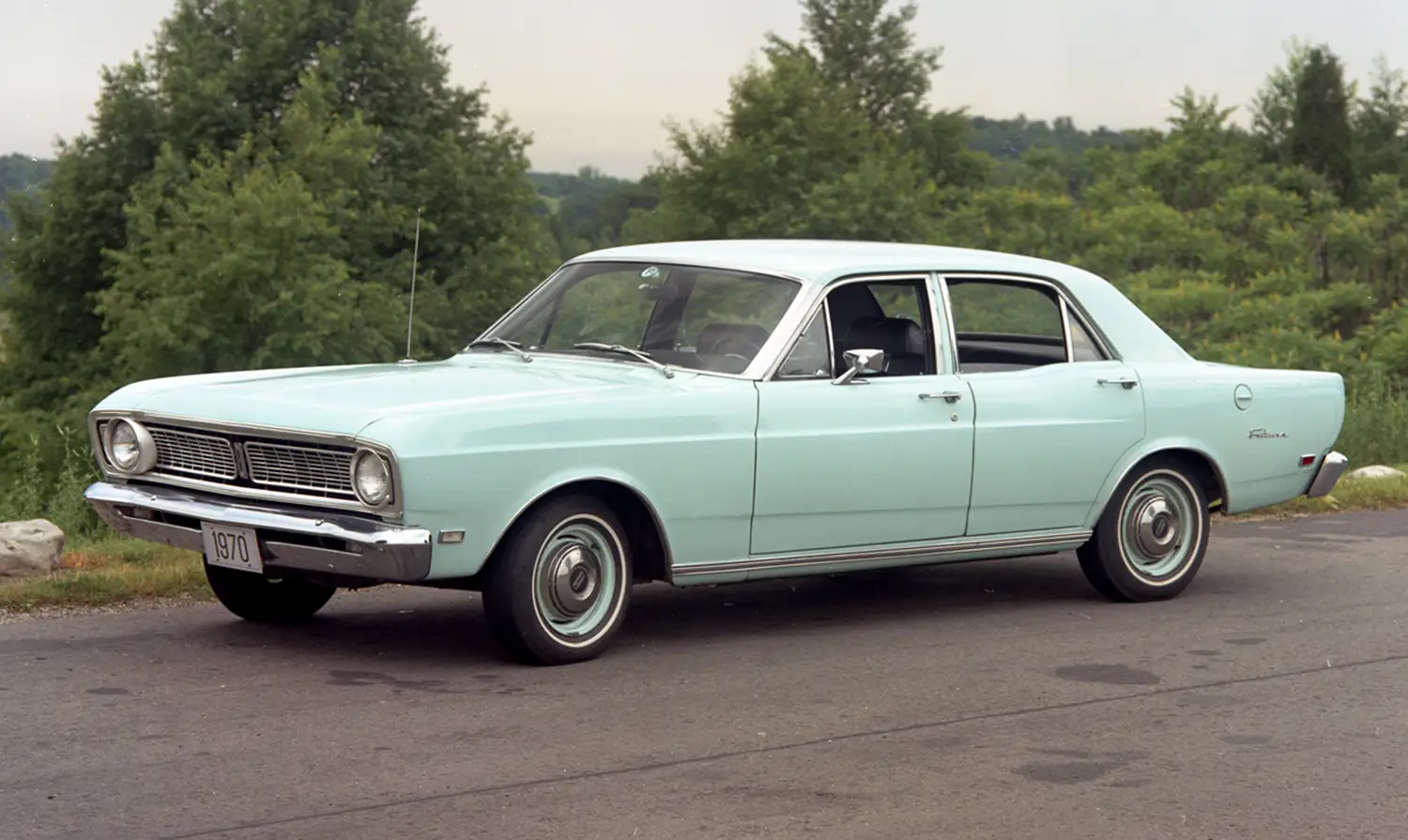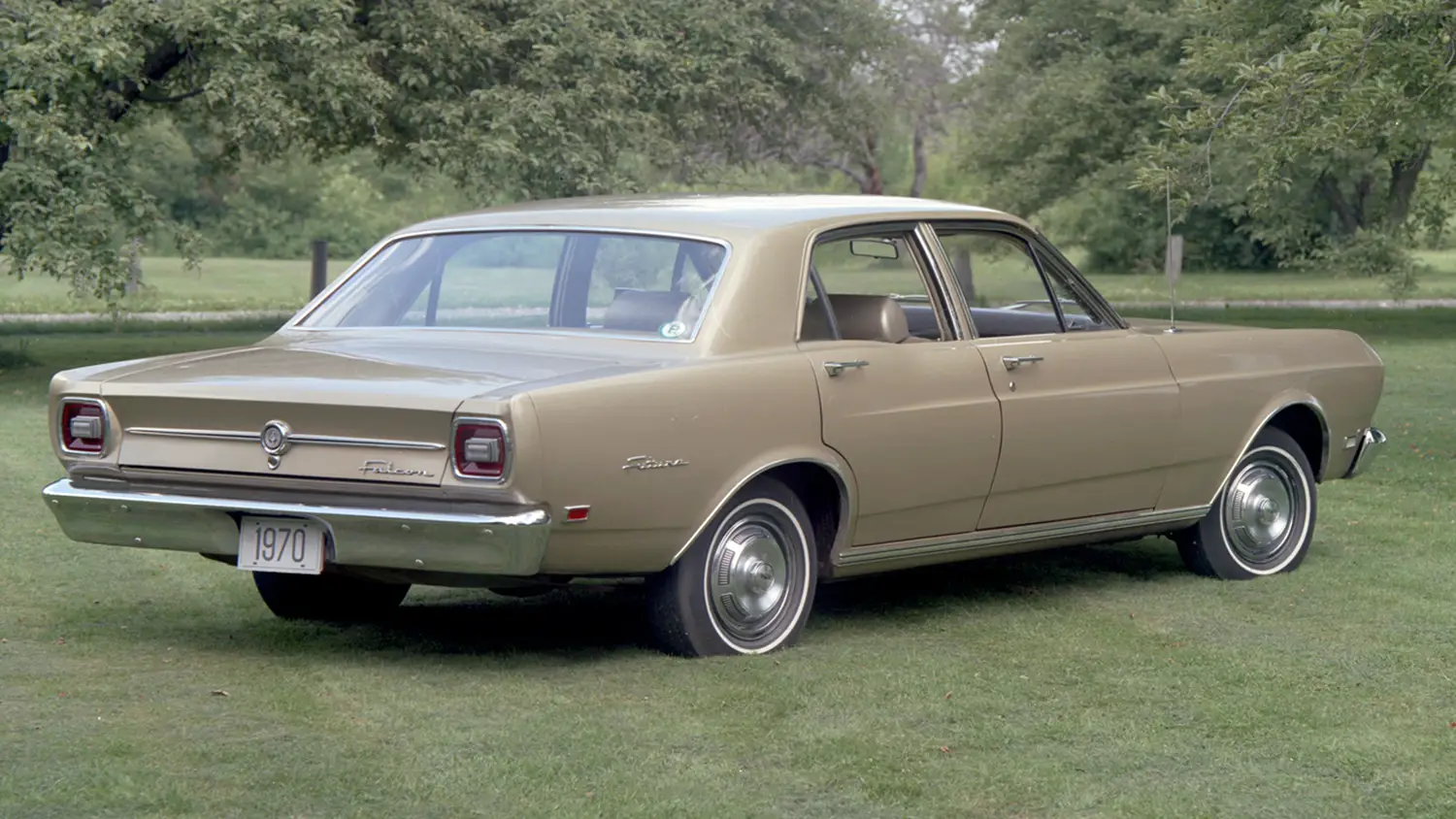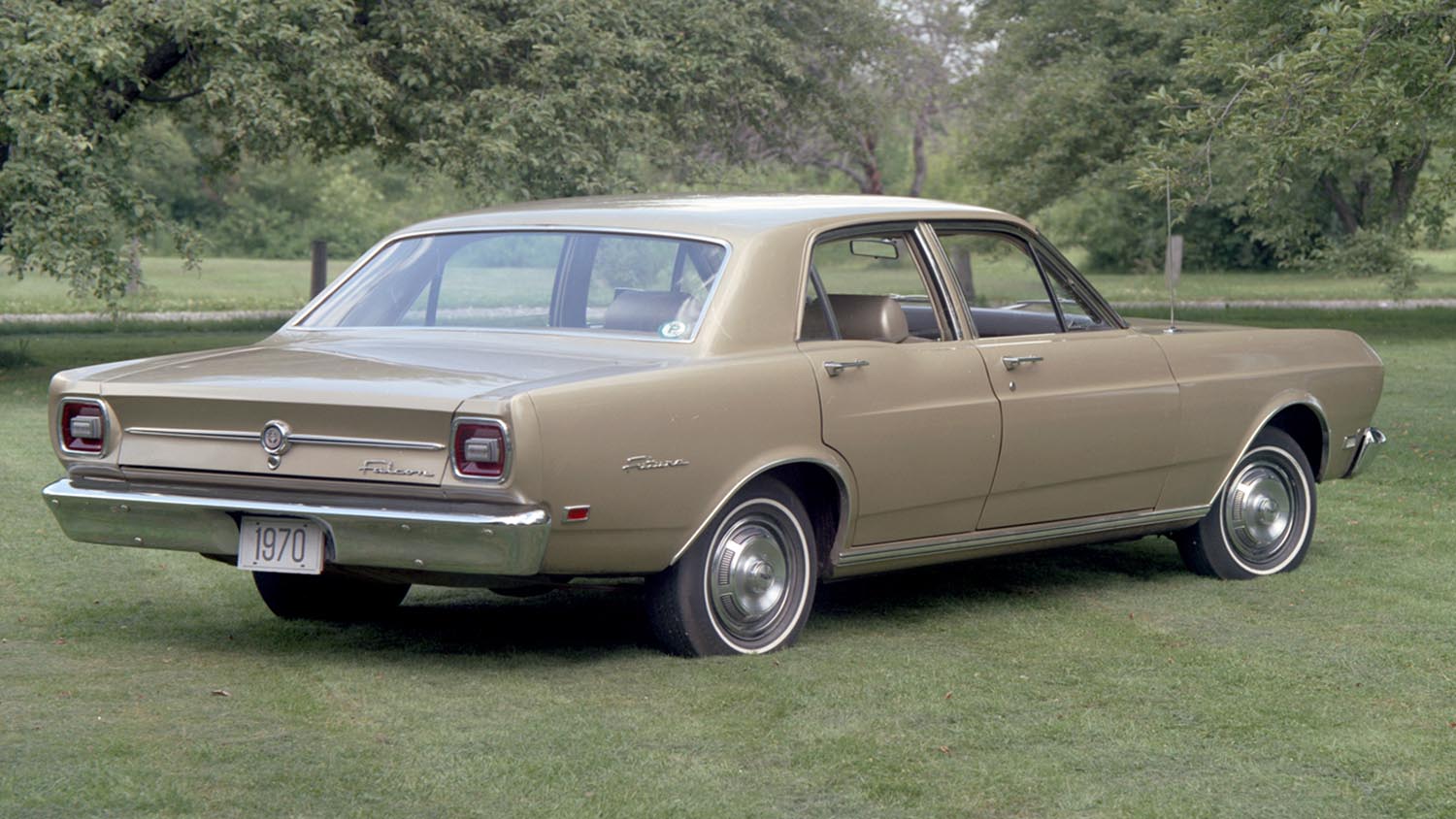
The year 1970 was a confusing and transitional period for the Ford Falcon in the United States. For a few short months, the Ford Motor Company offered a version that strayed from the Falcon’s compact roots. This unique short-lived model, especially the 1970 Ford Falcon Futura four-door, holds an unusual, almost accidental, place in automotive history. It represents the very end of the original Falcon’s bloodline and a peculiar re-badging experiment born of corporate strategy.
The Falcon’s Compact Beginnings
The Ford Falcon arrived in 1960 as a brilliant response to the rising popularity of imports and the growing demand for an American-made compact car. Under the guidance of Robert McNamara, the Falcon was conceived as an economical and simple vehicle. It quickly found favor with American families seeking practical transportation. Its unit-body construction and straightforward engineering kept costs down and reliability high. The Falcon’s sales success was instrumental in forcing General Motors to rethink its own compact strategy.
A Platform for American Legends
The Falcon platform, designed for economy and durability, proved remarkably versatile. It went on to underpin one of the most significant cars in American history. The original Ford Mustang, launched in 1964, was essentially a sporty reskin of the Falcon’s basic architecture. This single act cemented the Falcon’s profound, if often uncredited, contribution to the muscle car era. The same fundamental design DNA was even shared with the popular Ford Maverick, which would eventually replace the Falcon.
The Strange Case of the 1970 Model Year
The compact Falcon, which shared its chassis with the Mustang, was officially being phased out in late 1969. Ford intended to replace it with the new Maverick for the 1970 model year. Consequently, a significant gap remained in the Ford lineup. The Maverick was only available as a two-door coupe, leaving Ford without an affordable, full-range economy option in the four-door sedan and station wagon segments. This is where the 1970 Ford Falcon Futura four-door enters the story.
The Mid-Size Imposter
To quickly fill the perceived void, Ford took a bare-bones version of the contemporary mid-sized Fairlane/Torino platform. They applied the familiar Falcon name and badges to it, resulting in the unusual 1970 1/2 Falcon, a significantly larger car than its predecessors. The 1970 Falcon Futura four-door, sitting atop this longer 117-inch wheelbase, offered an unexpected amount of interior space and ride comfort for a vehicle wearing the “compact” Falcon badge. This late-stage platform swap created a vehicle that was a Falcon in name only, sharing very little with the compact car that launched a decade earlier.
Futura Trim: An Economical Luxury
The Futura trim represented the top of the short-lived 1970 Falcon lineup. It offered a step up from the base Falcon, giving buyers an economical car with a few comfortable appointments. The four-door sedan configuration was focused on family utility and everyday driving. Even though it was considered a budget model in the mid-size segment, the Futura included touches like richer cloth and vinyl upholstery, as well as full foam-padded seats, giving a hint of “big-car ideas.” The primary mission remained value and practicality.
Engine and Performance Options
Beneath the hood of the four-door Futura, buyers found a range of powertrains more typical of a mid-size car. The standard engine was Ford’s reliable 200 cubic inch inline six-cylinder engine, producing 120 horsepower. For customers desiring more acceleration and cruising capability, an optional 302 cubic inch Windsor V8 engine was available. This engine delivered 220 horsepower and a torque figure of 300 lb-ft. Transmission options included a standard three-speed manual or the optional SelectShift Cruise-O-Matic three-speed automatic. The larger V8 in the mid-size platform provided respectable passing power compared to the purely economical six-cylinder unit. Its rear-wheel-drive layout was the established norm for American family sedans of the era.
The Quick End of an Icon
The presence of two distinctly different cars wearing the Falcon badge, the old-style compacts sold until late 1969 and the new Torino-based mid-sizer sold in 1970, caused marketing confusion. The new 1970 1/2 Falcon was a stop-gap measure from the start. As the Ford Maverick began to offer a full range of body styles in 1971, the necessity for the larger, re-badged Falcon vanished. The nameplate was quickly dropped at the end of the 1970 model year, officially ending the North American history of the venerable Ford Falcon.
The Final Word on the Four-Door Futura
The 1970 Ford Falcon Futura four-door stands today as a unique artifact from a moment of corporate transition. It was an affordable, comfortable, and relatively spacious sedan for its time, fulfilling a short-term market need. Its significance is less about groundbreaking design and more about its strange existence as the final, re-bodied iteration of a nameplate that had once launched a compact revolution. Collectors appreciate its rarity and its place at the crossroads of American automotive history.
Disclaimer: Content on this site is for informational purposes only. Vehicle specs, pricing, and availability may change. Always verify details with official sources before making decisions. Opinions are those of the authors.
Source: Ford Heritage Vault

